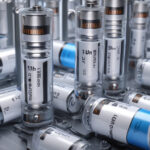“Revolutionizing Water Purification: Newly Discovered Microbes by US Scientists”
Scientists in the US have discovered a newly identified phylum of microbes thriving up to 2.5 kilometers beneath the Earth’s surface. These extraordinary microbes have the potential to transform the way we purify water on a global scale. With water scarcity becoming an increasingly pressing issue around the world, this groundbreaking discovery could hold the key to ensuring access to clean and safe drinking water for all.
The newly discovered microbes belong to the phylum “Hemimastigophora” and were found in groundwater samples collected from sites in the United States and Canada. What makes these microbes particularly remarkable is their ability to thrive in extreme environments with low oxygen levels, high temperatures, and high levels of heavy metals. This unique adaptability makes them ideal candidates for use in water purification systems, especially in areas where traditional methods fall short.
Current water purification technologies often rely on chemical treatments that can be harmful to both the environment and human health. By harnessing the power of these newly discovered microbes, researchers believe they can develop more sustainable and eco-friendly water treatment solutions. The microbes have shown promising results in laboratory tests, effectively removing contaminants and pathogens from water samples.
One of the key advantages of using these microbes for water purification is their efficiency. Unlike conventional treatment methods that can be time-consuming and energy-intensive, these microbes work quickly and effectively. This means that large quantities of water can be purified in a shorter amount of time, making the process more cost-effective and accessible to communities in need.
Furthermore, the use of these microbes could also help address the growing problem of antibiotic resistance. Traditional water treatment methods often rely on antibiotics to eliminate harmful bacteria, but over time, this can contribute to the development of antibiotic-resistant strains. By utilizing naturally occurring microbes with antimicrobial properties, we can reduce our reliance on antibiotics and help combat the spread of drug-resistant bacteria.
In addition to their potential applications in water purification, the discovery of the “Hemimastigophora” phylum opens up new avenues for research in microbiology and biotechnology. Scientists are eager to further study these unique microbes to unlock their full potential and explore other possible uses, such as bioremediation and bioenergy production.
As we continue to face environmental challenges and the growing demand for clean water, innovations like the discovery of these microbes remind us of the importance of investing in scientific research and exploration. By supporting scientists in their quest to understand the natural world, we pave the way for groundbreaking discoveries that have the power to shape a more sustainable and resilient future for all.
In conclusion, the discovery of the newly identified phylum of microbes by US scientists represents a significant step forward in the field of water purification and environmental sustainability. With their unique properties and potential applications, these microbes have the capacity to purify the entire world’s water supply, offering hope for a healthier and more equitable future for generations to come.
water purification, microbes, sustainability, environmental science, scientific discovery











